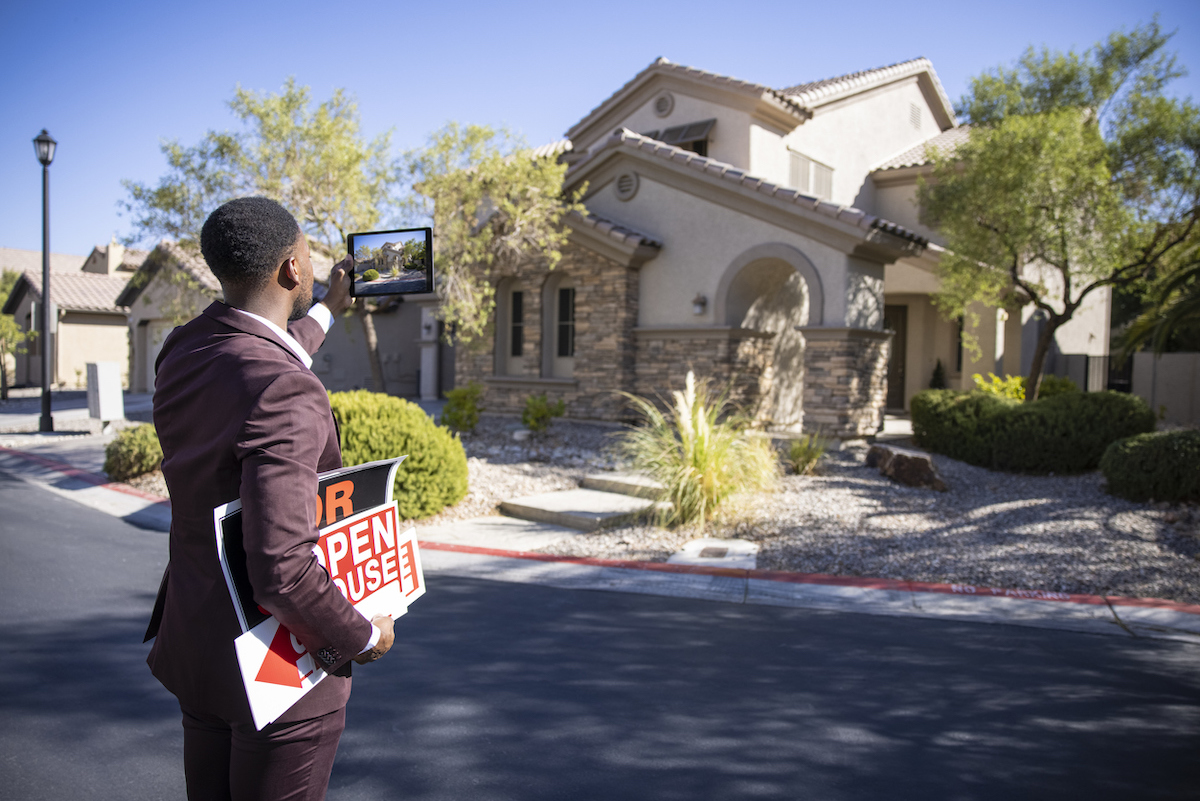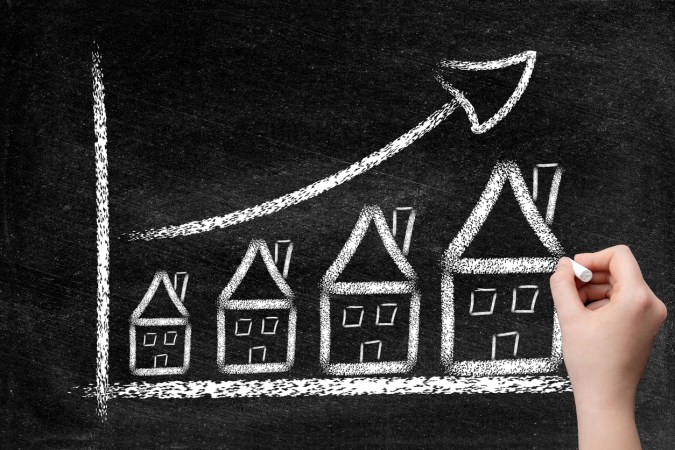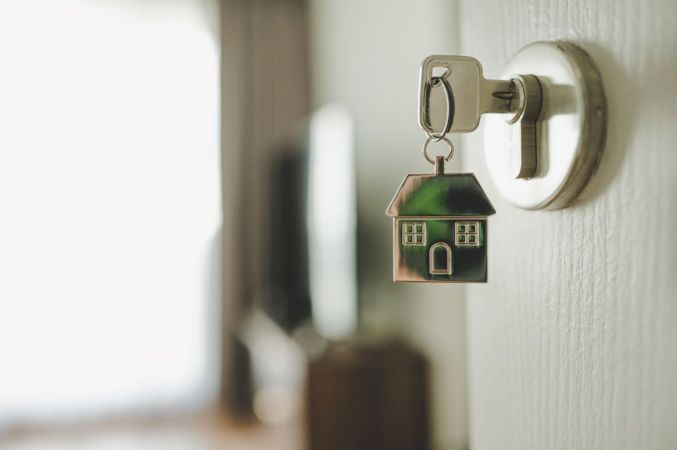We may earn revenue from the products available on this page and participate in affiliate programs. Learn More ›
During the past two years, home prices have been, for lack of a better word, crazy, so much so that we’ve been warning buyers not to compromise on some of the essentials that could lead to buyer’s remorse.
However, prices are finally starting to drop in some parts of the country. “Home sellers in 2022 should be aware that the housing market is beginning to transition towards favoring home buyers,” says Jason Gelios, a realtor at Community Choice Realty in Detroit, MI. “Compared to the past two years or so where homes were receiving over a dozen offers, we are seeing an average of five offers per home,” he says.
So, how should you price your home in today’s volatile real estate market? Keep reading to learn about four crucial things to keep in mind.
RELATED: If You Can’t Find the House You Want, Should You Just Build It?
You should price to sell.
Our experts agree that as a general rule, overpricing your home is a bad strategy. Depending on the price range, Michael Sadis, leader of The Michael Sadis Team at Serhant, warns against listing the home for substantially more than it’s worth. “Buyers are well educated in this market and they are happy to pay the list price or above in order to acquire your property,” he says.
However, if the home is overpriced, Sadis says buyers won’t lowball you or try to negotiate—they’ll just move on to another opportunity. “Overpricing is the kiss of death in this market and you’ll end up getting more for your home if you hit the list price perfectly,” he says.
His view is shared by Gelios, who adds that even in a hyperactive seller’s market, you should not overprice the home. “It could spell disaster if the home sits stagnant due to the higher price not being accepted by the market.”

However, Christy Walker, broker/owner at Re/Max Signature in Phoenix, AZ, believes that there are certain scenarios in which sellers may be able to get by inching up the price.
“Pricing on the high side (top 5 percent of sales or higher than the last recent comparable) should only be considered, even in a strong sellers’ market, when the seller is willing to be patient with the days on market it may take to sell, and when the home is in pristine condition and has been staged appropriately.”
Also, she says this method should only be used if there is very little direct competition, or the house is unique. But she admits that it will eliminate some buyers because it’s out of their search range, others who see it as on the high side of their budget, and also some buyers who may assume they need to offer above list price in a bidding war and won’t even bother.
“It is often the joke of the industry that sellers see their home as the million-dollar mansion while the appraiser sees it as upper middle class and the buyer sees it as a fixer-upper,” Walker says. “Perspective plays a huge role in what a buyer is willing to pay and with rising interest rates, most buyers are getting savvy enough to compete for the homes that are worth it to them, but to pass on anything overpriced just because a seller thinks they can get top dollar in this market.”
She believes that pricing slightly below what the home might reasonably expect to sell for is a great strategy in this market. “It gets more people looking at the home, which likely expedites the timeline to receive a good offer.” And when qualified buyers feel the home is fairly priced, Walker says they will compete against each other to get the seller to accept their offer.

Use the right comps and get multiple opinions.
The key to pricing your home correctly is knowing what it’s worth—and that amount is due, in part, on the rest of the homes in your area.” Gelios recommends taking a deeper look at what other homes in the area are selling for and what they have sold for. “This can help you make a sound decision as to what price to list,” he says.
There is also wisdom in a multitude of counselors. “Rather than just one real estate agent, meet with multiple brokers to learn their opinion on the value of your home,” advises Sadis. “Hopefully, they are all in the same ballpark, so go with the agent who you feel will best market and represent your home to get you the highest amount.”
And you should also allow your realtor or broker to be honest, which may require you to put your feelings aside. “When we discuss pricing, our job is to lead, guide, and protect the seller and that means having a frank conversation about the actual market conditions and not just what they have seen or heard, which could be hearsay,” Walker says. “We also have a duty to inform a seller that just because the last house sold in the neighborhood for X dollars doesn’t necessarily mean they can list their home for more and expect good results.”
RELATED: What Are iBuyers, and Can They Really Drive Up Real Estate Prices?
You should still put in the effort.
Even though the market still favors sellers, this is not the time for you to neglect home maintenance projects or the home’s interior and exterior appearance. “You will attract more home buyers and higher offers if your home is presented right to potential buyers,” Gelios says. He recommends paying attention to curb appeal and evaluating what type of first impression potential buyers have when they look at your home. “You can make simple updates, like trimming back bushes and trees, clearing pathways, and even adding solar pathway lights.”
And it doesn’t stop there. “Declutter about half of what is currently in the home, complete small repairs, such as fixing the rattling ceiling fan or the dripping faucet in advance, to make the showing experience better,” Walker advises. She also recommends having the home professionally cleaned as this shows the house is well cared for, and removes offending smells and sights that could turn buyers off.

Never put the words “as is” in the listing.
Since it’s still a seller’s market, you might think that anything goes, so why should you have to fix up your home? “It might be tempting for a home seller to add the words ‘as is’ to the description, thinking that it opts them out of making any kind of repair or adjustment,” Gelios says. However, he warns that those two words may actually scare off buyers who think there’s something wrong with the property.
And even if buyers do come to the home, they might underbid based on the maintenance and repairs that you’ve failed to complete. “A seller cannot turn a blind eye to the flaws in their own home, the clutter that distracts a buyer from truly seeing the potential, or the obvious repairs that need to be made—which are revealed when touring the home in person,” Walker says.
RELATED: The Best Home Value Estimator Sites








